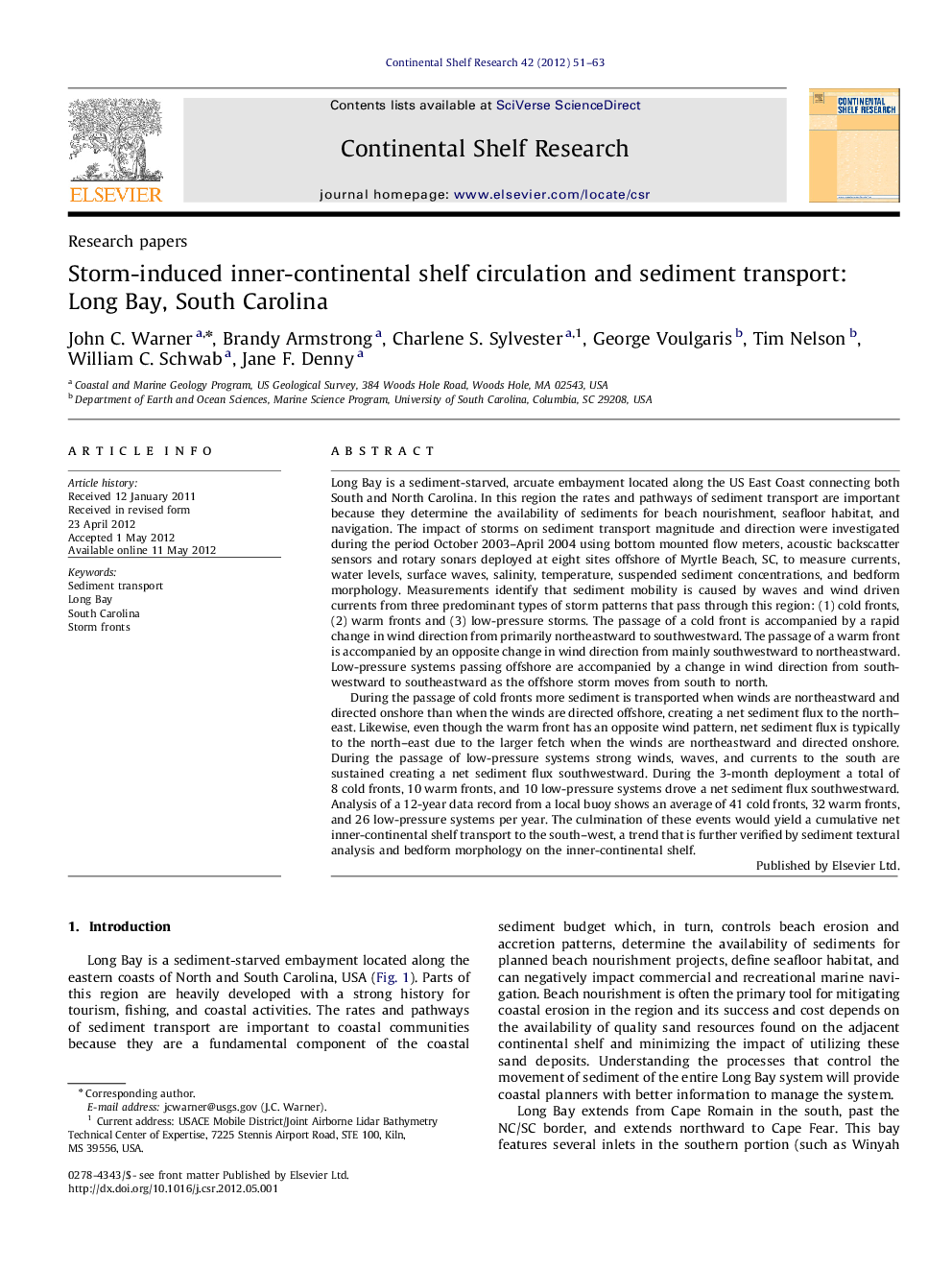| کد مقاله | کد نشریه | سال انتشار | مقاله انگلیسی | نسخه تمام متن |
|---|---|---|---|---|
| 4532408 | 1626168 | 2012 | 13 صفحه PDF | دانلود رایگان |

Long Bay is a sediment-starved, arcuate embayment located along the US East Coast connecting both South and North Carolina. In this region the rates and pathways of sediment transport are important because they determine the availability of sediments for beach nourishment, seafloor habitat, and navigation. The impact of storms on sediment transport magnitude and direction were investigated during the period October 2003–April 2004 using bottom mounted flow meters, acoustic backscatter sensors and rotary sonars deployed at eight sites offshore of Myrtle Beach, SC, to measure currents, water levels, surface waves, salinity, temperature, suspended sediment concentrations, and bedform morphology. Measurements identify that sediment mobility is caused by waves and wind driven currents from three predominant types of storm patterns that pass through this region: (1) cold fronts, (2) warm fronts and (3) low-pressure storms. The passage of a cold front is accompanied by a rapid change in wind direction from primarily northeastward to southwestward. The passage of a warm front is accompanied by an opposite change in wind direction from mainly southwestward to northeastward. Low-pressure systems passing offshore are accompanied by a change in wind direction from southwestward to southeastward as the offshore storm moves from south to north.During the passage of cold fronts more sediment is transported when winds are northeastward and directed onshore than when the winds are directed offshore, creating a net sediment flux to the north–east. Likewise, even though the warm front has an opposite wind pattern, net sediment flux is typically to the north–east due to the larger fetch when the winds are northeastward and directed onshore. During the passage of low-pressure systems strong winds, waves, and currents to the south are sustained creating a net sediment flux southwestward. During the 3-month deployment a total of 8 cold fronts, 10 warm fronts, and 10 low-pressure systems drove a net sediment flux southwestward. Analysis of a 12-year data record from a local buoy shows an average of 41 cold fronts, 32 warm fronts, and 26 low-pressure systems per year. The culmination of these events would yield a cumulative net inner-continental shelf transport to the south–west, a trend that is further verified by sediment textural analysis and bedform morphology on the inner-continental shelf.
► Sediment resuspension in Long Bay is dominated by storm-driven wave activity.
► Three storm types determine mean sediment transport direction.
► Net sediment transport is to the south–west at the study area.
Journal: Continental Shelf Research - Volume 42, 1 July 2012, Pages 51–63